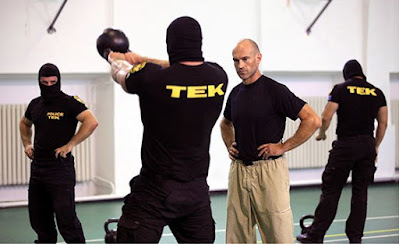I hate push ups, they are far too difficult. I do them anyway, and (if you are not doing them every day) so should you.
I wish they were easier because they are such a great strength building exercise. They are free to do, they take next to no time, and they work almost your entire body. I do push ups even though I dislike doing them. I felt I wasn't doing enough of them, and I began to wonder how many would be considered average.
I have been looking on the internet to try and find the average number of push ups that the average person can do. This is a strangely difficult question to answer because there are many definitions of what constitutes an 'average' person.
I have found multiple graphs and tables, and none of them seem to agree with each other. Most of these results are based on very fit people who obsessively go to the gym, whereas I am curious about what the average able bodied person aged 19-39 can do.
The other week I was talking to a personal trainer. Over the course of his career he has seen fit people as well as hundreds of people who are trying to get fit. He hasn't worked with morbidly obese people, or people with various disabilities that make doing exercise rather difficult without modifications. I figured his customer base is probably the type of people I was curious about, people with a general level of health and strength but are not elite athletes.
I asked how many push ups and other body weigh exercises that an average person can do. I specifically asked what the average adult male can do, because that means more to me because I am an adult male.
I didn't ask about the averages for females, I just didn't think of it at the time because I was curious about myself. Sorry.
The fitness trainer clarified the type of push ups I was asking about, he spoke a bit about how obese people tend not to be able to do any push ups or any other body weight exercises, how overfat people tend not to be able to do more than one or two of any exercise, how people can train up to being able to do quite a lot of push ups, and we discussed that I was merely after the average number that the average guy could do.
As this is the observation of a personal trainer, he is basing these numbers on people who go to the gym as well as people who are paying for a personal trainer, so the numbers are probably a little higher than average. These numbers are for people are either fit or are on there way to being fit.
So how many chin ups and pull ups can the Average Australian do?
According to the personal trainer, based on his experience with clients over the years, the average man who is neither ultra-fit nor obese and has no major injury or disability can do about ten push ups. He also said if you include overweight people in these stats, then the average would likely be about one push up.
I was surprised by that, I would have thought the average Australian man could do a lot more push ups than ten.
I started doing 2 minutes of training per day a few years ago, I was able to do about 25 push ups at the time which sounded like nothing but is apparently more than the average guy. It didn't take me long before I worked up to being able to do about 75 push ups. It was difficult building up to this number, it took a lot of effort but it didn't take too long because I was doing push ups every day.
How many chin ups and pull ups can the Average Australian do?
While I was there I also asked about how many chin ups and pull ups the average man can do. I was told that most people can do less of these than push ups, and obese people and overweight people often struggle to do a single one unassisted.
That makes sense, I can do a lot more push ups than chin ups. Most people can do more chin ups than pull ups as they are utilising their biceps more with pull ups. I agree with that too, I certainly find pull ups to be more difficult than chin ups.
According to the personal trainer, the average man who regularly goes to the gym and/or is paying for a personal trainer, can usually do about 5 chin ups, or about 3 pull ups. He also said if you include overweight people, then the average would be zero unassisted chin ups or pull ups.
I find chin ups and pull ups really difficult, so these low numbers seem reasonable to me. That being said, even on a bad day I can do considerably more than both of those numbers, and so can my kids. I can also do significantly more than those numbers wearing a weighted dip belt, so claiming hat I am lifting less weight is no longer an excuse they can make.
How many average Australians can do other body weight exercises?
I then asked about some of the more impressive body weight exercises such as human flag, planche, etc.
According to the fitness trainer these are usually considered too difficult for the average person to bother training towards doing them. They can't do these exercises, nor are they usually willing to work towards them. Hmmm, that seems odd, but makes sense when I look around at all the overfat people in Australia.
It appears even though I am scrawny I am apparently a lot stronger than the average male. I can do considerably more push ups, more chin ups, and more pull ups than people bigger than me. On top of this I can do human flag, elbow lever, bent arm planche, and am working towards some more impressive body weight exercises such as back lever and front lever. This all started with 2 minutes per day of exercise as part of my prochnost' training.
You should do some push ups and other body weight exercise. You should do this every day. It is free and it will make you stronger. If you are skinny you should train for strength, not size. Start with a personal challenge where you complete 100 push ups a day for 30 consecutive days and go from there. If one hundred is too many, set a smaller challenge. If you can only do ten push ups, try to do five sets of them throughout the day to reach fifty each day, and build from there. It is surprising how quickly you make progress when you can be bothered to do this every day.
It is impressive when a skinny person can do substantially more body weight exercises than a larger person. Admittedly they are lifting less weight, but they are also using considerably less muscle. When you use a weighted dip belt, then you are using less muscle to lift the same weight, which is even more impressive.
Do prochnost' training. Be more!














































